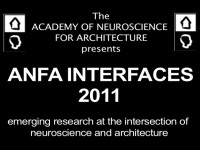- Home
- »
- Meetings
- »
- ANFA Interfaces 2011
- »
- Vastu Veda in the Age of Neuroscience: Some Brain-Based Principles for the Design of Human Environments
Vastu Veda in the Age of Neuroscience: Some Brain-Based Principles for the Design of Human Environments
Tom Albright
| April 20, 2011 | |
| 1 hours 05 minutes | |
| Tom Albright | |
(This talk was followed by a commentary by architect and author of books exploring architecture and neuroscience, John Eberhard, which can be found here.)
The discipline of architecture has deep roots in ancient traditions that seek to optimize human behavioral and physiological responses to the built environment. Contemporary neuroscience takes this mission to a new level, in which the design of human spaces – spaces for learning, creation, decision and action – may be qualified and quantified by influence on information processing systems of the brain. The implications of this new neuroscience for architecture will be explored by consideration of brain mechanisms for acquisition, storage, organization, retrieval and use of information within the spaces we inhabit.
Tom Albright is Professor and Director of the Vision Center Laboratory at the Salk Institute for Biological studies. His laboratory focuses on the neural structures and events underlying the perception of motion, form, and color.







